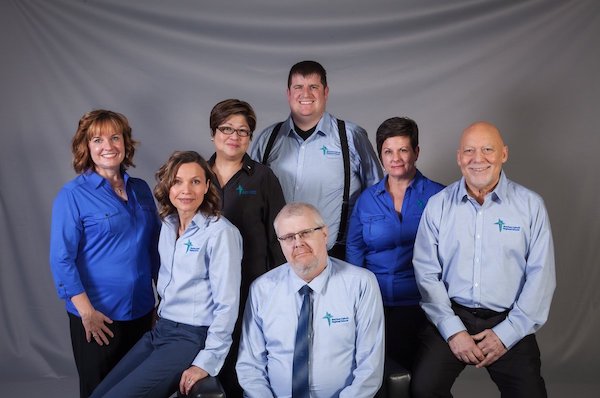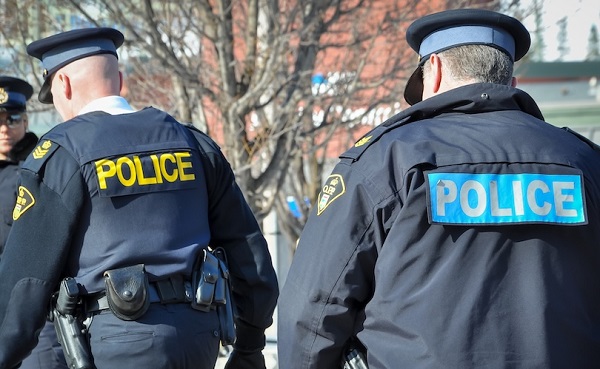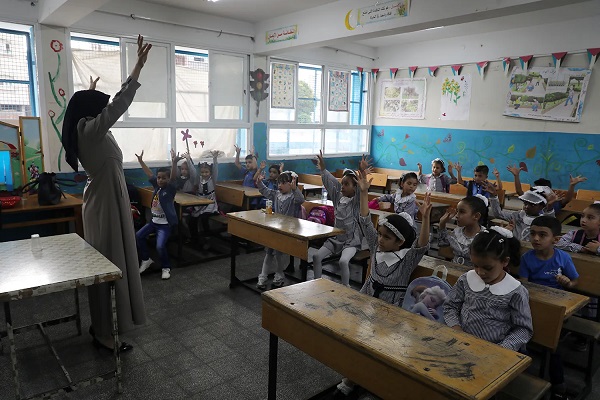Education
Negotiations between ATA and Red Deer Catholic Schools go public

It may be a simple misunderstanding, but it also may be a negotiating tactic. Either way, the Alberta Teachers Association has issued a news release claiming Red Deer Catholic Regional Schools may be considering a lockout. Less than a day after that release came out, Red Deer Catholic Schools issued its own release to clearly explain the situation to the public as they see it.
Here are the two releases:
From the Alberta Teachers Association
Teachers Worried about Red Deer Catholic Moving towards Lockout
Recent actions to sidestep the third-party independent mediator in Red Deer Catholic (RDCRS) teacher negotiations are a troubling sign of things to come. RDCRS board negotiators have taken the unusual step of asking the mediator to remove herself from bargaining even though two dates for mediation were already scheduled.
By asking the mediator to write out, the board has kicked off a two-week cooling off period that lapses on March 12, and opens the door to the board locking out teachers.
“Our desire has always been to reach an agreement without a disruption to schools. Fifty-eight of 61 school divisions have a deal, so we know an agreement is very much achievable if we just use those other settlements as a guide. We strongly believe the mediator will be helpful in getting the parties to a settlement.”
—Sara Lambert, president of Red Deer Catholic Local No 80
While teacher representatives have agreed to bargain on the scheduled mediation dates, they are worried that the board, absent the mediator, is planning to waste time and thwart a settlement. Bargaining will be held on March 7, but teachers have only agreed to continue meeting on March 8 if it is clear that the board is prepared to make meaningful progress on the first day.
“If the board intends to get down to the business of bargaining, we can get a deal done this week. That is what we want. However, if it looks like the board is wasting our time, playing games and ignoring the trend set across the rest of the province, there is no point continuing.”
—Sara Lambert, president of Red Deer Catholic Local No 80
Red Deer Catholic teachers are looking for a settlement that reflects the agreements reached in other jurisdictions, which includes improvements on issues related to substitute teachers and school administrators. The solutions being proposed are low cost and reasonable.
Collective bargaining for teachers in Alberta is a two-phase process where matters of significant cost and broad impact are negotiated at a central table, followed by local negotiations between individual school divisions and ATA bargaining units on other more locally specific matters.
The Alberta Teachers’ Association is the professional association of teachers in Alberta and acts as the bargaining agent for all teachers employed in public, separate and francophone school divisions. The Red Deer Catholic School Division employs approximately 700 contracted and substitute teachers in Catholic schools in Red Deer, Blackfalds, Sylvan Lake, Rocky Mountain House, Innisfail and Olds.
Reply from Red Deer Catholic Regional Schools
Red Deer Catholic Regional Schools Reacts to Recent ATA Media Release
For immediate release – March 6, 2024
The Alberta Teachers’ Association (ATA) announced, in a surprise media release late yesterday, that Red Deer Catholic Regional Schools (RDCRS) is sidestepping “the third-party independent mediator … in teacher negotiations”. Nothing could be further from the truth.
On February 26, 2024, in an email from the mediator to both the ATA and RDCRS, the mediator stated,
“Further to my phone calls with each of you on Friday, I understand that the Employer reviewed the “binary choice” in Sean’s email of February 15, 2024, and agreed the next step should be for the mediator to write out and let the cooling off period begin. However, I understand the Employer is willing to meet with the ATA, without the mediator, on March 7 and 8, 2024 during the hours previously discussed (evening and day).”
The mediator further stated in that email correspondence,
“I have decided to not issue recommended terms of settlement at this time as I feel the parties are too far apart in their current positions. Attached is the letter confirming this decision”.
The email the mediator is referring to on February 15, 2024, came from the ATA chief negotiator, Sean Brown, in which he referred to a “binary choice” as follows,
“Given the results of the meeting and the sentiments shared by members, I believe the next step is a binary choice:
-
The employer bargaining team returns to the table and listens to its teachers. Furthermore, that the employer be prepared to move on the items that members need. (Our preferred option), or
-
The mediator will need to write out and the two-week cooling off period will commence.
We hope to hear back that the employer will return to the table. If not, then they will leave teachers with few options.”
Vice Chair Dorraine Lonsdale states, “RDCRS believes that factual reporting of events, activities, and matters pertinent to our local teacher negotiations with the ATA is now necessary for our communities to understand what is involved in these local teacher negotiations. To this end, RDCRS has opened a section of our website to report to our communities on our local teacher negotiations. Information will be shared on a regular basis as we continue to negotiate with the ATA.”
The bargaining team for RDCRS will attend the scheduled meetings on March 7 and 8, 2024 and bargain with the ATA to reach an agreement that is mutually acceptable to both parties.
“It is the intention of RDCRS to continue a principled and respectful approach while bargaining the local items tabled by both parties. The school division highly values its teachers and in addition, we are responsible to students, parents, and our communities,” Vice Chair Lonsdale continues. “RDCRS has a duty to preserve our programs and services, to manage our complex education system and to be financially accountable for our decisions. These three pillars extend also to our bargaining of collective agreements affecting our employees. RDCRS takes these responsibilities seriously, and these responsibilities always remain an important part of our considerations.”
The Division is committed to serving children and parents with a complete offering of learning opportunities delivered within the context of Catholic teachings and within the means of the Division.
Red Deer Catholic Regional Schools serves over 10,650 students in 21 schools in Red Deer, Sylvan Lake, Rocky Mountain House, Innisfail, Blackfalds and Olds. It also supports the learning of over 850 students in a Home Education Program. The Division is committed to serving children and parents with a complete offering of learning opportunities delivered within the context of Catholic teachings and within the means of the Division.
Alberta
Schools should go back to basics to mitigate effects of AI

From the Fraser Institute
Odds are, you can’t tell whether this sentence was written by AI. Schools across Canada face the same problem. And happily, some are finding simple solutions.
Manitoba’s Division Scolaire Franco-Manitobaine recently issued new guidelines for teachers, to only assign optional homework and reading in grades Kindergarten to six, and limit homework in grades seven to 12. The reason? The proliferation of generative artificial intelligence (AI) chatbots such as ChatGPT make it very difficult for teachers, juggling a heavy workload, to discern genuine student work from AI-generated text. In fact, according to Division superintendent Alain Laberge, “Most of the [after-school assignment] submissions, we find, are coming from AI, to be quite honest.”
This problem isn’t limited to Manitoba, of course.
Two provincial doors down, in Alberta, new data analysis revealed that high school report card grades are rising while scores on provincewide assessments are not—particularly since 2022, the year ChatGPT was released. Report cards account for take-home work, while standardized tests are written in person, in the presence of teaching staff.
Specifically, from 2016 to 2019, the average standardized test score in Alberta across a range of subjects was 64 while the report card grade was 73.3—or 9.3 percentage points higher). From 2022 and 2024, the gap increased to 12.5 percentage points. (Data for 2020 and 2021 are unavailable due to COVID school closures.)
In lieu of take-home work, the Division Scolaire Franco-Manitobaine recommends nightly reading for students, which is a great idea. Having students read nightly doesn’t cost schools a dime but it’s strongly associated with improving academic outcomes.
According to a Programme for International Student Assessment (PISA) analysis of 174,000 student scores across 32 countries, the connection between daily reading and literacy was “moderately strong and meaningful,” and reading engagement affects reading achievement more than the socioeconomic status, gender or family structure of students.
All of this points to an undeniable shift in education—that is, teachers are losing a once-valuable tool (homework) and shifting more work back into the classroom. And while new technologies will continue to change the education landscape in heretofore unknown ways, one time-tested winning strategy is to go back to basics.
And some of “the basics” have slipped rapidly away. Some college students in elite universities arrive on campus never having read an entire book. Many university professors bemoan the newfound inability of students to write essays or deconstruct basic story components. Canada’s average PISA scores—a test of 15-year-olds in math, reading and science—have plummeted. In math, student test scores have dropped 35 points—the PISA equivalent of nearly two years of lost learning—in the last two decades. In reading, students have fallen about one year behind while science scores dropped moderately.
The decline in Canadian student achievement predates the widespread access of generative AI, but AI complicates the problem. Again, the solution needn’t be costly or complicated. There’s a reason why many tech CEOs famously send their children to screen-free schools. If technology is too tempting, in or outside of class, students should write with a pencil and paper. If ChatGPT is too hard to detect (and we know it is, because even AI often can’t accurately detect AI), in-class essays and assignments make sense.
And crucially, standardized tests provide the most reliable equitable measure of student progress, and if properly monitored, they’re AI-proof. Yet standardized testing is on the wane in Canada, thanks to long-standing attacks from teacher unions and other opponents, and despite broad support from parents. Now more than ever, parents and educators require reliable data to access the ability of students. Standardized testing varies widely among the provinces, but parents in every province should demand a strong standardized testing regime.
AI may be here to stay and it may play a large role in the future of education. But if schools deprive students of the ability to read books, structure clear sentences, correspond organically with other humans and complete their own work, they will do students no favours. The best way to ensure kids are “future ready”—to borrow a phrase oft-used to justify seesawing educational tech trends—is to school them in the basics.
Business
Why Does Canada “Lead” the World in Funding Racist Indoctrination?
-

 Agriculture1 day ago
Agriculture1 day agoWhy is Canada paying for dairy ‘losses’ during a boom?
-

 Automotive2 days ago
Automotive2 days agoFord’s EV Fiasco Fallout Hits Hard
-

 Alberta1 day ago
Alberta1 day agoAlberta’s new diagnostic policy appears to meet standard for Canada Health Act compliance
-

 Alberta15 hours ago
Alberta15 hours agoHousing in Calgary and Edmonton remains expensive but more affordable than other cities
-

 Business14 hours ago
Business14 hours agoState of the Canadian Economy: Number of publicly listed companies in Canada down 32.7% since 2010
-

 Censorship Industrial Complex12 hours ago
Censorship Industrial Complex12 hours agoCanadian university censors free speech advocate who spoke out against Indigenous ‘mass grave’ hoax
-

 Bruce Dowbiggin16 hours ago
Bruce Dowbiggin16 hours agoHunting Poilievre Covers For Upcoming Demographic Collapse After Boomers
-

 Censorship Industrial Complex1 day ago
Censorship Industrial Complex1 day agoTop constitutional lawyer warns against Liberal bills that could turn Canada into ‘police state’












